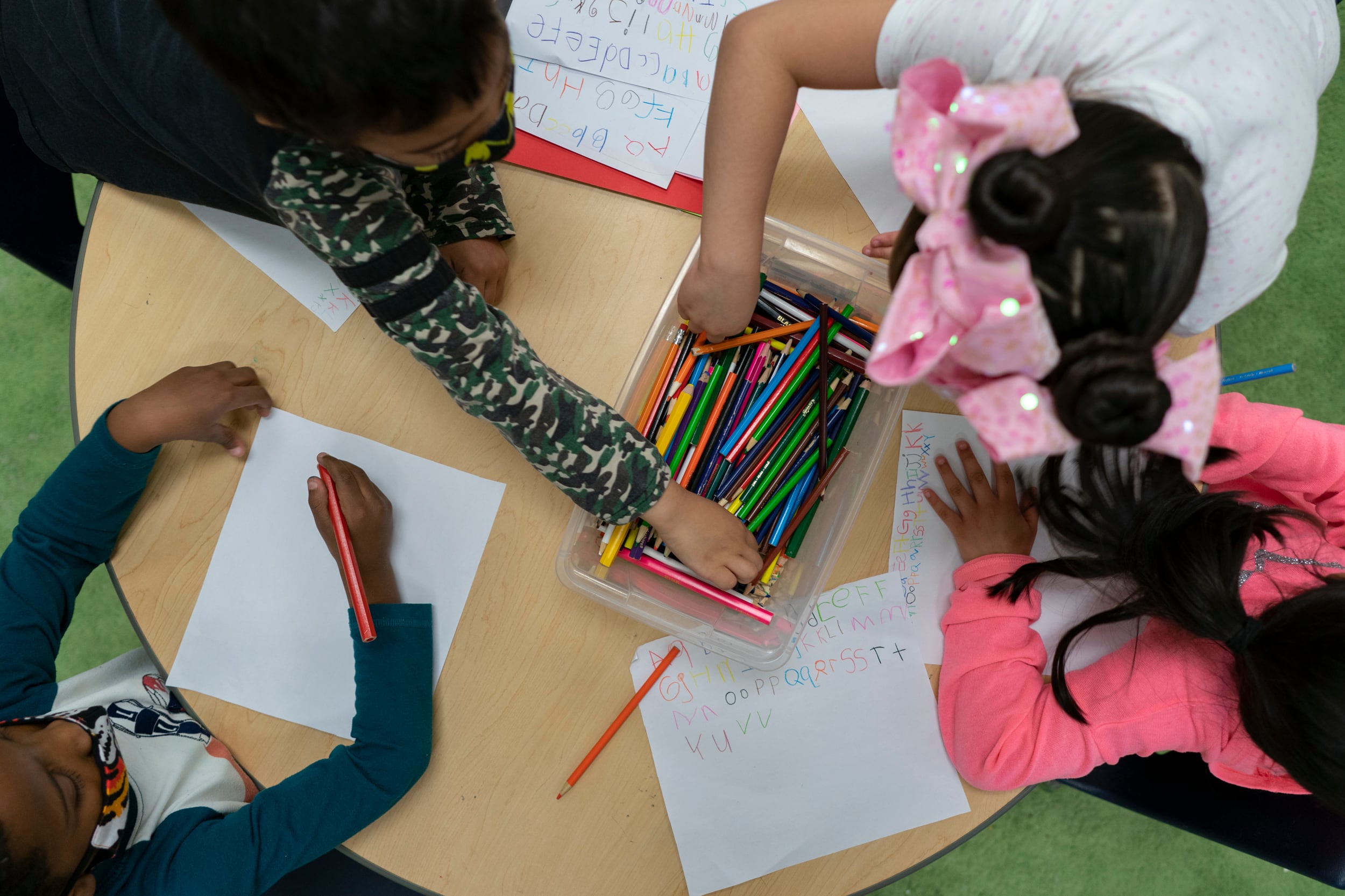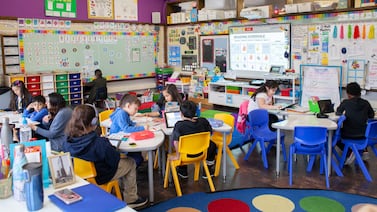It’s typical for Aimee Parra to have a handful of kindergarteners who are struggling at the start of the school year.
A particular combination of academic and social challenges sets off alarm bells that those students need extra help. Over the next few months, Parra would usually recommend that a couple be evaluated for a disability, entitling them to more support.
This year, though, feels different.
The pandemic meant that many fewer of her students attended pre-kindergarten or any in-person daycare. A few weeks into kindergarten, more than half her class is struggling with the basics of play and communication.
So she’s watching closely, as always, and trying new ways to help. But she’s not drawing conclusions yet about what students need long term.
“We have to be even more careful,” said Parra, who teaches in New Mexico’s Las Cruces Public Schools. “The exposure to experience — learning opportunities — has really impacted what we’re seeing ability-wise, academically and social-emotionally.”
After a year and a half of disrupted learning, educators across the country say they are trying to walk a thin line: make sure all students get the help they need, while avoiding mistaking the emotional and academic effects of the pandemic for a disability. For students and families, the stakes are high.
“The earlier you can get your child serviced, the better they will be in regards to having their needs met throughout the rest of their learning path,” said Leona Fowler, an instructional support teacher who works with students with disabilities in Queens. But she’s concerned that students who simply need in-person support might be referred for special education services instead. “Not all students need to necessarily have that.”
The pandemic made identifying students’ needs more complicated in a few ways. For one, many young children last year skipped pre-kindergarten or kindergarten, when schools would typically begin to assess whether students require special education services.
Students who did attend virtually might have had their challenges missed. In Chicago, social worker Alyssa Rodriguez often found herself trying to understand if a virtual student was struggling to pay attention because a TV was on in the background, nearby siblings were talking, or there was a deeper issue.
“That was kind of hard for me,” she said. “Is it the kid is really struggling to engage in the curriculum and participate because physically and biologically they really can’t? Or is it home has just so much going on?”
In New Mexico, spotty internet connections made it hard for Parra to accurately hear how students repeated sounds while reading last year. She was also limited to just an hour a day of live time with her students on Zoom.
And Winnie Williams-Hall, an eighth grade special education teacher in Chicago, said because many of her students kept their cameras off, she couldn’t monitor body language or see what triggered an outburst — which can provide insight into an emotional or cognitive disability.
“I like to watch my students work just to see the process and steps that they take,” she said. “Did they fidget, did they sit there and stare out the window for a while before they answered the question? Did they jump right in? You’re able to gauge different things like that.”
Last month, federal education officials acknowledged those challenges and stressed the importance of identifying students with disabilities this year, urging schools to use coronavirus relief money to boost their capacity to evaluate students’ needs. Some schools still have a backlog of students who were flagged last year as possibly having a disability but have yet to be tested.
The consequences of missing a diagnosis, or delaying services for students who need them, can be profound. Academic gaps can widen, and if students are frustrated because they’re not getting the help they need, it can lower their self-esteem and set them further behind.
But some educators worry that students will be misidentified, too, as schools respond to lots of students with academic gaps, students who need time to adjust to being in a school setting, and students who experienced trauma or lost a loved one during the pandemic. In some cases, that could mean losing access to time in traditional classroom settings for unnecessary services, or feeling stigmatized or isolated.
Historically, civil rights advocates have raised concerns about the higher rates of identification for students of color, especially Black students. (Recent studies have suggested that Black students are actually under-identified when compared with their white classmates from similar economic backgrounds, though, especially when they attend racially segregated schools.)
“We’re really hoping that states, and districts, and the feds are keeping track of the data,” said Lauren Morando Rhim, who heads The Center for Learner Equity, a nonprofit that advocates for students with disabilities. That will help them “be able to say: ‘Hey, wait a minute, city A, B, or C, your special ed numbers are exploding.’”
Some researchers and advocates want schools to watch specifically for disparities by race, family income, and disability type. National data show that Black students in particular are more likely than their peers to be identified as having an emotional or intellectual disability.
“My area of concern is always going to be in those subjective disability categories,” said Temple Lovelace, who has studied inequities in special education and now directs Assessment for Good, an effort focused on creating better student tests. “Whenever we’ve had to make tough decisions, historically, students who are part of traditionally marginalized populations seem to always be on the losing end of that.”
In Venice, California, third grade teacher Meghann Seril is using every tool at her disposal to figure out what kinds of help students really need.
She met with her students’ second-grade teachers to learn about their academic progress and what their support systems look like at home. She surveyed parents, too, to understand where their children were struggling.
Already, she’s seated two students closer to the front of the classroom so she can keep an eye on them and offer them extra help. She has her “antennae up,” but knows it will be some time before she turns to other educators to see if there’s something else needed.
“I want to be really mindful to not to jump the gun on saying: ‘Oh, I think that there’s a need for support, or there might be something else going on with a student,’” she said. “I really want to take my time in getting to know them.”






